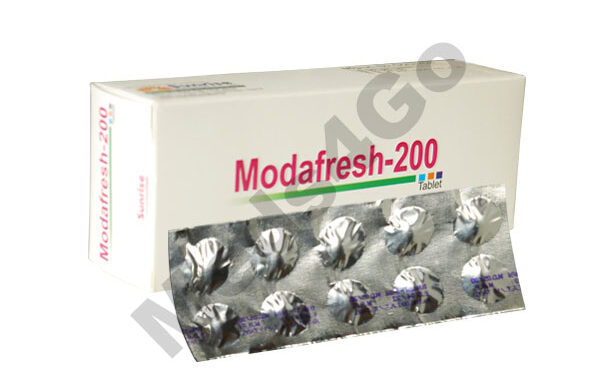Healthy Eating: A Guide to Balanced Nutrition
-
Table of Contents
“Healthy Eating: A Guide to Balanced Nutrition – Nourish your body, fuel your life.”
Introduction:
Healthy eating is a fundamental aspect of maintaining overall well-being and promoting optimal health. A guide to balanced nutrition serves as a valuable resource in understanding the importance of consuming a variety of nutrient-rich foods to meet the body’s nutritional needs. By adopting healthy eating habits, individuals can enhance their energy levels, support their immune system, manage weight effectively, and reduce the risk of chronic diseases. This guide aims to provide essential information on healthy eating, including the key components of a balanced diet, recommended daily intake of nutrients, and practical tips for incorporating healthy food choices into daily life.
The Importance of a Balanced Diet for Optimal Health
The Importance of a Balanced Diet for Optimal Health
When it comes to maintaining good health, a balanced diet is essential. A balanced diet provides the body with the necessary nutrients, vitamins, and minerals it needs to function properly. It is the foundation for optimal health and well-being.
One of the key benefits of a balanced diet is that it helps to prevent chronic diseases. By consuming a variety of foods from different food groups, you can ensure that your body gets all the nutrients it needs. This can help to reduce the risk of conditions such as heart disease, diabetes, and certain types of cancer.
A balanced diet also plays a crucial role in maintaining a healthy weight. When you eat a variety of foods in the right proportions, you are less likely to overeat or consume excessive amounts of unhealthy foods. This can help to prevent weight gain and obesity, which are major risk factors for many chronic diseases.
In addition to preventing chronic diseases and maintaining a healthy weight, a balanced diet can also improve your mood and mental well-being. Research has shown that certain nutrients, such as omega-3 fatty acids found in fish, can have a positive impact on brain health and reduce the risk of depression and anxiety.
Furthermore, a balanced diet can boost your energy levels and improve your overall physical performance. By providing your body with the right nutrients, you can enhance your endurance, strength, and stamina. This can help you to perform better in sports and other physical activities.
It is important to note that a balanced diet is not just about what you eat, but also how much you eat. Portion control is key to maintaining a healthy diet. It is important to listen to your body’s hunger and fullness cues and eat until you are satisfied, not stuffed.
To achieve a balanced diet, it is recommended to include a variety of foods from all food groups. This includes fruits, vegetables, whole grains, lean proteins, and healthy fats. Each food group provides different nutrients that are essential for your body’s optimal functioning.
Fruits and vegetables are rich in vitamins, minerals, and antioxidants. They are low in calories and high in fiber, which can help to promote digestion and prevent constipation. Whole grains, such as brown rice and whole wheat bread, are a great source of complex carbohydrates and fiber. They provide sustained energy and help to regulate blood sugar levels.
Lean proteins, such as chicken, fish, and legumes, are important for muscle growth and repair. They also help to keep you feeling full and satisfied. Healthy fats, such as avocados, nuts, and olive oil, are essential for brain health and the absorption of fat-soluble vitamins.
In conclusion, a balanced diet is crucial for optimal health. It helps to prevent chronic diseases, maintain a healthy weight, improve mood and mental well-being, boost energy levels, and enhance physical performance. By including a variety of foods from all food groups and practicing portion control, you can ensure that your body gets all the nutrients it needs to thrive. So, make healthy eating a priority and reap the benefits of a balanced diet.
Tips for Incorporating Nutrient-Rich Foods into Your Daily Meals
Eating a balanced diet is essential for maintaining good health and overall well-being. It provides our bodies with the necessary nutrients, vitamins, and minerals to function properly. However, with the abundance of processed and unhealthy food options available today, it can be challenging to incorporate nutrient-rich foods into our daily meals. In this section, we will provide you with some tips on how to make healthier choices and ensure that your meals are packed with the right nutrients.
One of the first steps to incorporating nutrient-rich foods into your daily meals is to plan ahead. Take some time each week to create a meal plan and make a grocery list. This will help you stay organized and ensure that you have all the necessary ingredients on hand. When planning your meals, aim to include a variety of fruits, vegetables, whole grains, lean proteins, and healthy fats. This will ensure that you are getting a wide range of nutrients and will help keep your meals interesting and flavorful.
Another tip for incorporating nutrient-rich foods into your daily meals is to focus on whole, unprocessed foods. These foods are typically higher in nutrients and lower in added sugars, unhealthy fats, and sodium. Instead of reaching for a bag of chips or a candy bar, opt for a piece of fresh fruit or a handful of nuts. Instead of processed white bread, choose whole grain bread or brown rice. By making these simple swaps, you can significantly increase the nutrient content of your meals.
In addition to choosing whole foods, it is also important to pay attention to portion sizes. Even nutrient-rich foods can contribute to weight gain if consumed in excess. Use measuring cups or a food scale to ensure that you are eating appropriate portion sizes. It can also be helpful to use smaller plates and bowls to visually trick yourself into thinking you are eating more than you actually are. By practicing portion control, you can enjoy a variety of nutrient-rich foods without overeating.
When it comes to cooking, there are several techniques you can use to maximize the nutrient content of your meals. Steaming, sautéing, and roasting vegetables are all great ways to preserve their nutrients while adding flavor. Avoid deep-frying or overcooking vegetables, as this can lead to nutrient loss. When cooking meats, opt for lean cuts and trim off any visible fat. Grilling, baking, or broiling meats are healthier cooking methods that help retain their nutrients.
Lastly, don’t forget to stay hydrated. Water is essential for our bodies to function properly and can help with digestion, nutrient absorption, and overall health. Aim to drink at least eight glasses of water per day and limit your intake of sugary beverages. If you find plain water boring, try infusing it with fruits or herbs for a refreshing twist.
Incorporating nutrient-rich foods into your daily meals doesn’t have to be complicated or overwhelming. By planning ahead, focusing on whole foods, practicing portion control, using healthy cooking techniques, and staying hydrated, you can easily make healthier choices and ensure that your meals are packed with the right nutrients. Remember, small changes can make a big difference in your overall health and well-being. So start today and take a step towards a healthier, more balanced diet.
How to Make Healthy Eating Sustainable and Enjoyable
Eating healthy is not just about following a strict diet or depriving yourself of your favorite foods. It’s about making sustainable choices that nourish your body and provide you with the energy and nutrients you need to thrive. In this section, we will explore how to make healthy eating sustainable and enjoyable, so you can maintain a balanced nutrition plan for the long term.
One of the keys to sustainable healthy eating is to focus on whole, unprocessed foods. These foods are packed with nutrients and are less likely to contain added sugars, unhealthy fats, and artificial ingredients. By choosing whole foods like fruits, vegetables, whole grains, lean proteins, and healthy fats, you can ensure that you are getting a wide range of nutrients without the excess calories.
Another important aspect of sustainable healthy eating is to listen to your body’s hunger and fullness cues. Instead of following strict meal plans or counting calories, try to eat when you are hungry and stop when you are satisfied. This intuitive eating approach allows you to develop a healthy relationship with food and trust your body’s natural signals.
Meal planning and preparation can also make healthy eating more sustainable. By taking the time to plan your meals and prepare them in advance, you can avoid relying on unhealthy convenience foods or resorting to takeout when you’re short on time. Set aside a few hours each week to plan your meals, make a grocery list, and prep ingredients. This way, you’ll have healthy options readily available when hunger strikes.
Incorporating variety into your diet is another way to make healthy eating enjoyable. Eating the same foods day after day can quickly become boring and lead to cravings for unhealthy options. Experiment with different fruits, vegetables, grains, and proteins to keep your meals interesting and flavorful. Try new recipes or explore different cuisines to expand your culinary horizons and discover new healthy favorites.
Finding a balance between indulgence and restriction is also crucial for sustainable healthy eating. It’s okay to enjoy your favorite treats in moderation, as long as you are making overall nutritious choices. Depriving yourself of foods you love can lead to feelings of deprivation and ultimately result in binge eating or falling off the healthy eating wagon. Allow yourself the occasional indulgence and savor it without guilt.
Staying hydrated is often overlooked but is essential for overall health and well-being. Drinking enough water throughout the day can help curb cravings, improve digestion, and support your body’s natural detoxification processes. Carry a water bottle with you and make it a habit to sip on water regularly.
Lastly, remember that healthy eating is not an all-or-nothing approach. It’s about making small, sustainable changes that add up over time. Don’t beat yourself up if you slip up or have a less-than-healthy meal. Instead, focus on making the next choice a healthy one and keep moving forward.
In conclusion, making healthy eating sustainable and enjoyable is all about finding a balance that works for you. Focus on whole, unprocessed foods, listen to your body’s cues, plan and prepare your meals, incorporate variety, indulge in moderation, stay hydrated, and remember that it’s a journey, not a destination. By following these guidelines, you can create a balanced nutrition plan that nourishes your body and supports your overall well-being.In conclusion, healthy eating is essential for maintaining balanced nutrition. It involves consuming a variety of nutrient-rich foods in appropriate portions to support overall health and well-being. A balanced diet should include a mix of fruits, vegetables, whole grains, lean proteins, and healthy fats. It is important to limit the intake of processed foods, added sugars, and unhealthy fats. By following a healthy eating plan, individuals can improve their energy levels, manage weight, reduce the risk of chronic diseases, and promote optimal physical and mental health.

 Smile Brighter: Meet Canberra’s Top Dental Hygienists
Smile Brighter: Meet Canberra’s Top Dental Hygienists  Transform Your Comfort: Discover the Benefits of Cushions Lab Seat Cushions and Pillows
Transform Your Comfort: Discover the Benefits of Cushions Lab Seat Cushions and Pillows  Enhance Your Mental Clarity with Modafresh 200
Enhance Your Mental Clarity with Modafresh 200  List of Top 10 Neurologists in India 2024
List of Top 10 Neurologists in India 2024  Body Care Products Manufacturers: Providing Quality Products for Your Skincare Needs
Body Care Products Manufacturers: Providing Quality Products for Your Skincare Needs  The Journey to the Best Microblading in Dubai: A Client’s Perspective
The Journey to the Best Microblading in Dubai: A Client’s Perspective  Exploring London’s Best Butcher Shops
Exploring London’s Best Butcher Shops  Enhance Your Shop Appeal with Sydney’s Best Carpentry Services
Enhance Your Shop Appeal with Sydney’s Best Carpentry Services  A Detailed Look at the Features of the LEGO Technic Mars Crew Exploration Rover
A Detailed Look at the Features of the LEGO Technic Mars Crew Exploration Rover